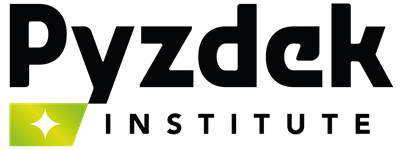Description
Why Choose Our Lean Six Sigma Yellow Belt Certification?

A Certified Lean Six Sigma Yellow Belt is a professional who has gained a foundational understanding of the Lean Six Sigma methodology, capable of participating in and contributing to Lean Six Sigma projects within an organization. Yellow Belts typically work as part of a Lean Six Sigma team to support process improvement projects led by Green or Black Belts.
Yellow Belts are introduced to the DMAIC methodology – Define, Measure, Analyze, Improve, and Control. Their training helps them understand problems, contribute to data collection, and participate in root cause analysis under the guidance of a project lead. They also learn about the role of various Lean Six Sigma tools and techniques in improving processes.
Lean Six Sigma Yellow Belts are familiarized with basic statistical tools for data analysis and interpretation, and they learn about standard Six Sigma tools like process mapping and Pareto charts to contribute to process improvement efforts.
Yellow Belts are also introduced to Lean principles such as value stream mapping, 5S, and Kaizen to understand how these principles can optimize processes, eliminate waste, and improve flow. They acquire foundational problem-solving skills and are introduced to techniques like Failure Mode and Effects Analysis (FMEA), and Root Cause Analysis (RCA).
Lean Six Sigma Yellow Belts at the Pyzdek Institute complete 40 hours of training, and pass a proctored, comprehensive, timed exam.
Key Learning Outcomes
- Foundational training in Lean Six Sigma principles and methodologies
- Basic understanding of statistical analysis and process improvement techniques
- Increased awareness and understanding of Lean Six Sigma concepts to aid career development
Lean Six Sigma Yellow Belt Course Curriculum
- Introduction to Six Sigma
- Waste and Value
- Value Streams, Flow and Pull
- Perfection
- Recognizing an Opportunity
- Pareto Analysis
- Assessing Six Sigma Projects
- Project Charter
- Avoiding and Overcoming Barriers
- L-Maps
- SIPOC Maps
- Product Family Matrices
- Kano Model
- Cascading Ys to CTQs
- Basic Principles of Measurement
- Statistical Principles
- Descriptive Statistics
- Control Charts for Continuous Data
- Statistical Process Control Techniques
- Continuous Distributions
- Process Capability Analysis
- Estimating Process Yields
- Activity Maps
- Physical Process Flows
- Current State Value Stream Map
- Data Collection and Sampling
- Drill Down Tools
- Distributions
- Benchmarking
- Project Risk Assessment
- Opportunity Maps
- Cause and Effect Analysis
- Create Feed-Forward Models for Improvement
- 5S
- Continuous Data Measurement Systems
- Develop the Improvement Plan
- Develop New Procedures
- Process Control Planning
- Deployment Maps
- Transfer Ownership and Validate Benefits
Comprehensive Course Inclusions
- Self-paced study with a 180-day subscription to the training site
- 42 online, on-demand modules
- 300+ quiz questions
- Comprehensive, proctored exam and real-time progress reports
- 4 CEUs awarded by The Pyzdek Institute upon successful course completion
- Access to online resources and forums
- Lean Six Sigma Yellow Belt Certification
- Certificate recorded in our public online database
How to Become a Certified Lean Six Sigma Yellow Belt

The Lean Six Sigma Yellow Belt certification is a beginner-level qualification in the field of process improvement. The certification process is designed to provide a foundational understanding of the Lean Six Sigma methodology, tools, and techniques, and to equip individuals with the skills and knowledge required to contribute to Lean Six Sigma projects. Below, we will outline the process of becoming a certified Lean Six Sigma Yellow Belt and the steps involved.
Lean Six Sigma Yellow Belt Training
The Lean Six Sigma Yellow Belt training is a foundational program designed to provide participants with an understanding of Lean Six Sigma principles, methodologies, and tools. The training consists of a series of online modules that are completed in sequence. Each module includes a lesson and quiz. The lessons were developed by Thomas Pyzdek, a renowned expert in the field, and are highly interactive. The quizzes are self-scoring, providing immediate feedback.
Lean Six Sigma Yellow Belt Certification Exam
Once the training is completed, participants must pass a comprehensive proctored exam. The exam is open book and open notes, but it is proctored to authenticate the participant’s identity. The proctor will monitor the participant via webcam and microphone while they take the exam. Upon passing the exam, participants are awarded Lean Six Sigma Yellow Belt certification.
Becoming a certified Lean Six Sigma Yellow Belt requires a commitment to training and understanding the foundational principles and methods of Lean Six Sigma. The certification process is designed to provide individuals with the skills and knowledge required to contribute to Lean Six Sigma projects effectively. The Lean Six Sigma Yellow Belt certification is a valuable asset to any organization and can lead to increased awareness and involvement in process improvement initiatives.




